Happy President’s Day: Bigfoot and Teddy!
Posted by: Loren Coleman on February 20th, 2012
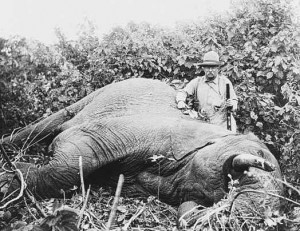

Happy President’s Day! Theodore “Teddy” Roosevelt (October 27, 1858 – January 6, 1919) was the 26th President of the United States of America (1901–1909). He appears to have been the only President to be associated with any of the stories of Bigfoot in frontier America.
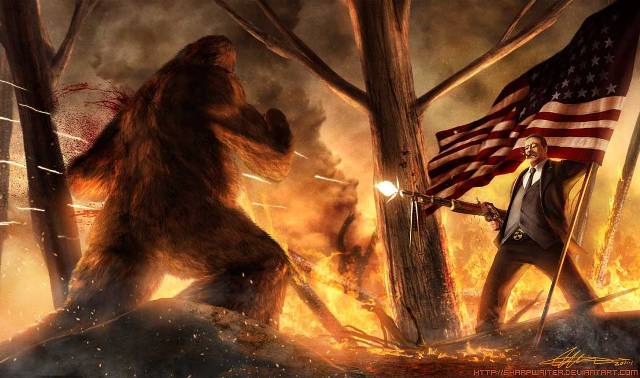
This image of “Teddy Roosevelt and Bigfoot” by artist Jason Heuser seems as if it was inspired by the story in The Wilderness Hunter.

In Chapter 12, of Bigfoot!: The True Story of Apes in America, (NY: Simon and Schuster, 2003), by Loren Coleman, you will find this:
Stories of violent Bigfoot do exist. Giant cannibals in the bush eating woman are part of ancient Indian lore, although little discussed today. One of the first stories among nonnatives appears in Theodore Roosevelt’s The Wilderness Hunter, published in 1890. During the mid-1800s, two hunters, one named Baumann, were camping in the Bitterroot Mountains, on the other side of the Rockies from Yosemite, when they were visited by something that left giant footprints. Then at midnight they saw, in the fire’s light, a huge upright form and smelled it, too.
The next morning, Baumann went to check traps, while his mate packed up. When Baumann returned, he found his friend’s neck broken and four great fang marks in his throat. Roosevelt added, “The footprints of the unknown beast, printed deep in the soft soil, told the whole story . . . his monstrous assailant, which must have been lurking in the woods, waiting for a chance to catch one of the adventurers unprepared, came silently up from behind, walking with long noiseless steps and seemingly still on two legs. . . . It had not eaten the body, but apparently had romped and gamboled around it in uncouth and ferocious glee, occasionally rolling it over and over; and had then fled back into the soundless depths of the woods.”
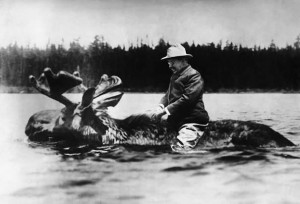
Teddy Roosevelt’s The Wilderness Hunter story has become a mainstay of Bigfoot lore, although considered opinion nowadays is that it is only a twice-told tale that may have more to do with a rouge grizzly bear than a Sasquatch. That has not stopped the widespread reproducing of Heuser’s art and the retelling of the story.
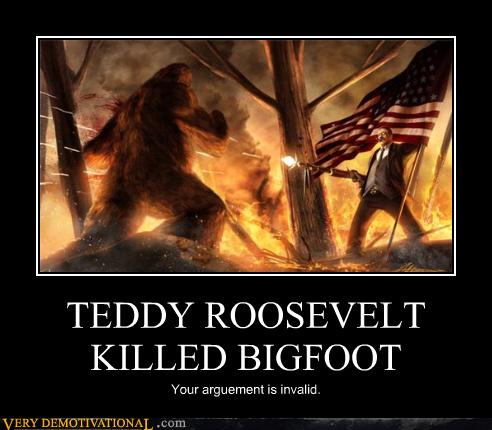

About Loren Coleman
Loren Coleman is one of the world’s leading cryptozoologists, some say “the” leading living cryptozoologist. Certainly, he is acknowledged as the current living American researcher and writer who has most popularized cryptozoology in the late 20th and early 21st centuries.
Starting his fieldwork and investigations in 1960, after traveling and trekking extensively in pursuit of cryptozoological mysteries, Coleman began writing to share his experiences in 1969. An honorary member of Ivan T. Sanderson’s Society for the Investigation of the Unexplained in the 1970s, Coleman has been bestowed with similar honorary memberships of the North Idaho College Cryptozoology Club in 1983, and in subsequent years, that of the British Columbia Scientific Cryptozoology Club, CryptoSafari International, and other international organizations. He was also a Life Member and Benefactor of the International Society of Cryptozoology (now-defunct).
Loren Coleman’s daily blog, as a member of the Cryptomundo Team, served as an ongoing avenue of communication for the ever-growing body of cryptozoo news from 2005 through 2013. He returned as an infrequent contributor beginning Halloween week of 2015.
Coleman is the founder in 2003, and current director of the International Cryptozoology Museum in Portland, Maine.

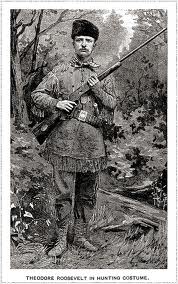









“Giant cannibals in the bush eating women are part of ancient Indian lore.”
This reference to giant cannibals does not necessarily mean they referred to Bigfoot type creatures.
There is a publication, Ancient American, available on line as well as a regular magazine on newstands, that explores anomalous archeological finds and theories about America before the arrival of Columbus and the European invasion that followed. They have had a number of articles about finds of skeletal remains of “giants” who were 7 feet or more in height here in North America. It may be that instead of a Bigfoot creature, these legends allude to groups of large statured people, “giants”, who may well have been cannibals in that they may have captured and eaten the native American, “Indian”, peoples. That they disappeared before 1492 would not be surprising in that the Amerindians would likely have wiped them out in self-defense.
In all the accounts I have seen about Bigfoot/Sasquatch and the native American peoples, there is a similar story that seems to run thru them all — the native Americans adopted a live and let live policy towards them and they seemed to have gotten along amicably enough.
For those who find discoveries of relics that seem out of place or indicate the presence of peoples that came from Europe, Asia, and Africa prior to 1492, Ancient American is a good read. In the interests of full disclosure, I am an occasional reader of the publication only, and have no financial links to it.
Speaking as an archaeologist: The problem with Ancient American, unfortunately, is that most if not all of what they report on is riddled with errors, speculation and generally doesn’t follow any scientific archaeological practices. A similar problem plagues cryptozoology, of course, where all sorts of rather improbable claims are made with little evidence to back it up (thankfully, there are actual attempts to approach the field scientifically, as with Dr. Meldrum’s efforts, for one example).
On the subject of “giant skeletons” found in mounds, what we actually think this stems from is how the early archaeologists in the 1800s measured the burials in their excavations, which could have bones that were somewhat spread apart (for example, if you measure from the toes, which would be flat on the ground, you can easily add half a foot). Therefore, a skeleton from an individual who may have been tall but not unusually so could get exaggerated into a small giant! Other reports seem to fall into just fantasy. In any case, no “giant skeletons” were ever preserved, and like many anomalous artifacts, seem to be a feature of 19th century exaggeration. Once archaeology began to be done and reported in a truly systematic and scientific way, these types of findings suddenly disappeared -even though the same types of sites were being excavated.
Teddy and his fellow hunter were sure they heard an Ape type creature. I thought it was really a BULL MOOSE.
Always loved the Baumann story… even if it may only be a tall tale told ’round the campfire…
Interesting.